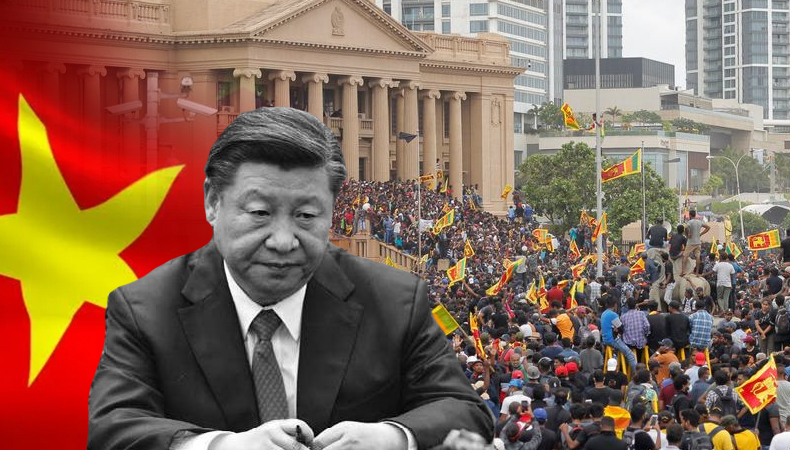China finds meaning of bankruptcy amid Sri Lankan crisis


Over 78 million people on Weibo viewed the hashtag “Sri Lanka president officially announces his resignation.” Weibo users watched the hashtag “huge protest march in Sri Lanka” 180 million times.
Baidu, a Chinese search engine, has created a specific page to follow happenings in Sri Lanka. The turn? Chinese nationalists immediately accused the United States of orchestrating the rallies. While many pointed the finger at China’s infrastructure projects for escalating Sri Lanka’s debt crisis, the Chinese had another objective. Most people concurred that the island nation experienced a “colour revolution” and “CIA-led coup.”
Related Posts
“The United States Agency for International Development coordinated the protests in Sri Lanka, with the phantom of the CIA appearing everywhere, and they urged Western nations not to interfere since it is a colour revolution! The United States is feverishly attempting to understand Sri Lanka, a crucial stop on the Belt and Road, according to Taiwanese artist Huang An, who is stationed in Beijing. On Weibo, Huang has more than 6 million followers.
Other people uploaded a copy of a tweet with the account “SNMilitary” that claimed USAID was behind the protest in Sri Lanka. The Twitter account also stated that “Western diplomats” were supporting the rally, calling it a “colour revolution.” The account, which describes itself as a “marine veteran,” primarily tweets in favour of Russia.
“There was a coup supported by the CIA in Sri Lanka. They were encouraged to stay out of it by Western diplomats who stood by them. According to a Weibo user reporting a tweet from SNMilitary, “Things in Sri Lanka are undergoing a colour revolution.”
The success of the tweet on Sina Weibo demonstrates the impact of pro-Russian propaganda on Chinese public opinion towards the Sri Lanka crisis. The media pundits attempted to explain the causes of Sri Lanka’s economic crisis and the ensuing political unrest in addition to blaming the US.
The Guangzhou’s Southern Weekly article, Crimes and Punishment of Sri Lanka’s Bankruptcy Crisis, received 1.1 million Weibo reads on July 10. The essay examines Sri Lanka’s predicament’s domestic causes.
“The outbreak has had a severe impact on Sri Lanka’s tourism sector, and related service sectors like airlines, hotels, and catering have also suffered declines. As a result, the country’s economy has gotten worse during the past two years. According to the April 21 edition of the Southern Weekly article, “The Sri Lankan government is keen to reform and has borrowed significantly, leading in enormous debt and may become the “first to fall” economy after the epidemic.
The news from Sri Lanka has also prompted questions on social media about what it means to “declare bankruptcy.” Weibo users viewed the hashtag “What does declaring national bankruptcy mean?” 30 million times.
According to a video from Beijing Economic News, “the financial phrase ‘national bankruptcy’ was proposed by the International Monetary Fund in 2002 and referred to the circumstance in which a country’s foreign assets are fewer than its external liabilities, i.e. insolvency.

















